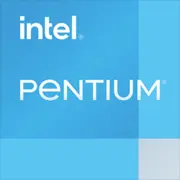Intel Pentium G3260

Intel Pentium G3260: Budget Processor of 2025 — Is It Worth Considering?
Introduction
In 2025, the processor market is filled with multi-core monsters, but older chips like the Intel Pentium G3260 still attract attention for their affordability. This dual-core processor, released in 2014, remains an option for ultra-budget builds. Let’s explore who it suits in the era of DDR5 and 5nm process technologies.
Key Specifications: Architecture and Performance
Haswell Architecture (4th Generation)
The Pentium G3260 is built on the Haswell microarchitecture (2013) and manufactured using a 22nm process. It is a dual-core processor without Hyper-Threading support (2 threads), with a base clock frequency of 3.3 GHz.
Performance
- Geekbench 6: 591 (Single-Core), 1018 (Multi-Core).
For comparison: the modern Celeron G6900 (2023) scores about ~1500/2500.
- Integrated Graphics: Intel HD Graphics (4th generation) — DirectX 11.1, supports 4K via DisplayPort, but lacks hardware decoding for HEVC/H.265.
Key Features
- Low power consumption (TDP 53W);
- Virtualization support (VT-x);
- No Turbo Boost or unlocked multiplier.
Price in 2025: New processors are rare, estimated cost — $40-50.
Compatible Motherboards
LGA1150 Socket
Motherboards for the G3260 are based on the following chipsets:
- H81/B85: Budget options with basic features (2 RAM slots, SATA III, USB 3.0).
- H87/Z87/Z97: Enhanced capabilities (RAID, more ports, overclocking for K-processors).
Selection Features
- New boards in 2025 are hardly produced. Remaining stock (e.g., ASUS H81M-K) costs $80-120, which is unreasonably expensive.
- It's wiser to look for used options ($30-50), but this article discusses only new products.
Recommendation: If budgets are tight, it’s better to choose a modern platform (LGA1700 or AM4).
Supported Memory
DDR3-1333/1600
- Maximum capacity: 32GB (depends on the chipset).
- No support for DDR4/DDR5 — this is the major limitation.
Tips
- For office tasks, 8GB (2x4GB) is sufficient.
- Use dual-channel mode to enhance graphics performance.
Power Supply Recommendations
Power Calculation
- Processor TDP: 53W.
- With integrated graphics: 300W power supply (e.g., be quiet! SFX Power 3 300W, $45).
- With discrete graphics card (e.g., GT 1030): 400W power supply (EVGA 400 N1, $35).
Important: Even weak power supplies with 80 Plus White certification will handle this system.
Pros and Cons
Pros
- Low cost (cheaper than most modern counterparts).
- Energy efficiency — suitable for mini PCs or media centers.
- Adequate performance for basic tasks (Word, YouTube, light gaming).
Cons
- Only 2 cores — multitasking is limited.
- Outdated platform (DDR3, PCIe 2.0).
- Weak graphics — won't run modern games.
Use Cases
1. Office and Web Surfing
- Working with documents, email, Zoom.
- Example: On G3260 + 8GB DDR3 + SSD, the system boots Windows 10 in 15 seconds.
2. Multimedia
- 1080p video playback (but 4K will stutter).
- Connecting to TV via HDMI (requires motherboard support check).
3. Light Gaming
- CS:GO — 720p, low settings, ~40-50 FPS.
- Minecraft — 1080p, ~60 FPS (no shaders).
4. Home Server
- NAS based on Linux: low power consumption and sufficient power for file tasks.
Comparison with Competitors
1. AMD Athlon 3000G (Price: $60-70)
- 2 cores/4 threads, Vega 3 graphics, supports DDR4.
- Geekbench 6: ~700/1400. Performs better in multi-threading and gaming.
2. Intel Celeron G6900 (Price: $80)
- 2 cores/2 threads, UHD Graphics 710, DDR4.
- Geekbench 6: ~1500/2500. Twice the performance.
Conclusion: G3260 lags behind even budget newcomers, but is cheaper.
Practical Assembly Tips
1. Choosing a Motherboard: Look for models with HDMI and USB 3.0 (for example, ASRock H81M-HDS).
2. SSD is Essential: Kingston A400 240GB ($25) will speed up system performance.
3. Cooling: The stock cooler is sufficient — temperatures do not exceed 65°C even under load.
4. Upgrade: Don't plan on upgrading — the platform is morally outdated.
Final Conclusion: Who Should Consider the Pentium G3260?
1. Owners of Old PCs: For upgrading LGA1150 systems without replacing the motherboard.
2. Budget Builds: If the goal is minimal cost (PC for $150-200).
3. Media Centers/Servers: Low power consumption and quiet operation.
Alternative: If the budget allows $100-150, it’s better to buy a used Core i5-4590 (4 cores) or a new Athlon 3000G.
The Pentium G3260 in 2025 is a choice for those who value pennies more than performance. For everyone else, the market offers fresher solutions.
Basic
CPU Specifications
Memory Specifications
GPU Specifications
Miscellaneous
Benchmarks
Compared to Other CPU
Share in social media
Or Link To Us
<a href="https://cputronic.com/en/cpu/intel-pentium-g3260" target="_blank">Intel Pentium G3260</a>